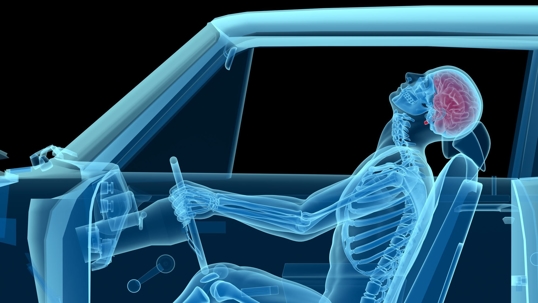Two drivers are involved in an accident. It’s a head-on collision, with similar cars moving at similar speeds. Yet one driver is hospitalized while the other seems mostly unharmed. How is this possible? What happens during a car crash?
Force at Impact
A car crash is a case of applied physics. Think back to high school science class: Force = mass x acceleration. A 3,000lb car moving at 60mph has a lot of force. If a car moving at that speed hits something, it will likely result in tragedy.
All that force needs to go somewhere. Normally, vehicle force is dispersed as heat through the brakes. In a collision, there’s only one place for it to go.
The booming roar of the crash, the intense shockwave that follows, and the car’s frame crumpling like a piece of paper are all examples of how force is transferred during a collision. The damage will continue until all the force is dispersed, and both vehicles come to a complete stop.
In a head-on collision, one of the most dangerous kinds, each car receives the other’s full force. It’s like boxers trading sucker punches at the same time.
Force on Bodies
People are not usually hurt from the initial impact of a car crash, but rather the bouncing after a collision. The car’s “crumple zone” absorbs much of the blow, but all that energy still needs to go somewhere.
The car violently shakes back and forth. As it does, passengers bounce around the cabin. In a minor crash, an occupant’s head might violently jerk back and forth, giving them whiplash. In a more serious accident, the passenger might bounce against a collapsing frame, shattered windows, or even scrape against metal pieces forced into the footwell.
Force from Airbags
Inflating airbags can potentially cause further damage. For years, safety boards advised that drivers keep their hands at “10 and 2.” However, the Nation Highway Traffic Safety Board (NHTSA) discovered this position locks the elbows. When an airbag inflates, arms locked into a “10 and 2” position can break at the elbows as they are pushed back with explosive force.
The NHTSA currently advises keeping arms at the “9 and 3” position; this keeps the elbows relaxed. If an airbag inflated while in the “9 and 3” position, the arms fold toward the body with much less resistance.
Even with ideal steering-wheel positioning, airbags have a reputation for causing injuries. While these injuries are less severe than the car crash itself, they send hundreds to the hospital every year. Concussions, facial fractures, and eye damage are a few more common airbag injuries.
Resisting Force
Tensing up and bracing for impact are some of the biggest mistakes people make in the seconds before a car crash. Tensing up creates physical resistance between the passengers and the incoming force. However, the force of a collision is so great that tension only increases the risk of injury.
Someone who tightly grips the steering wheel and braces their feet on the floor absorbs more of the shockwave than someone who sits limp with their arms at their sides. After all, the force needs to go somewhere before the car can come to a stop.
This is why, for example, intoxicated drivers typically suffer fewer injuries in a car accident. The more physically relaxed someone is at the moment of impact, the less likely they are to suffer serious injuries.
If you or someone you love suffered serious injuries in an auto accident, you might have a case. If you’d like an experienced Sacramento injury lawyer from Piering Law Firm to evaluate your case, please send us an email or call (916) 476-2399

